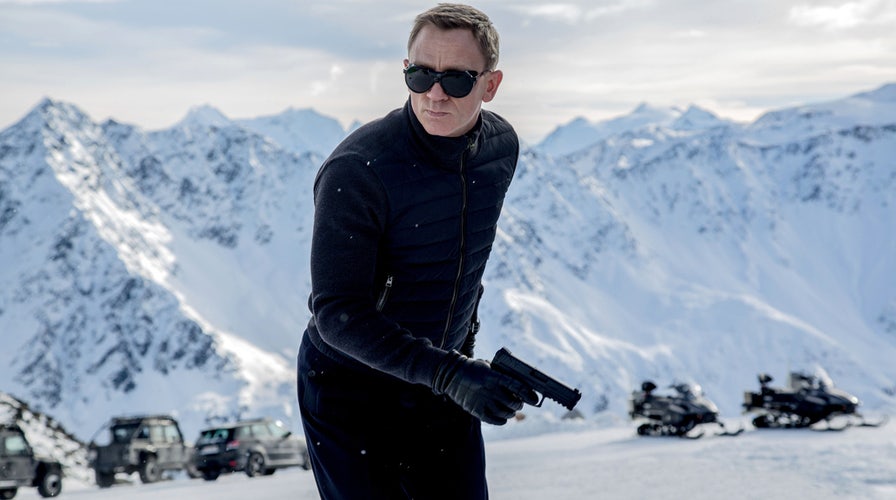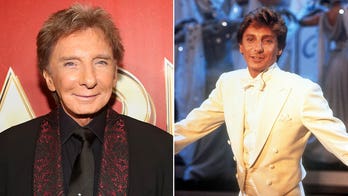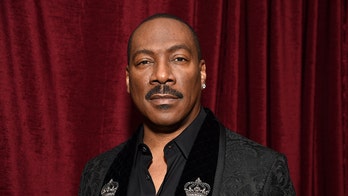Daniel Craig rejects $50 million offer to use Android phone
The Android isn't good enough for James Bond
"Spectre" begins with a vibrant splash of color and frenzy as Daniel Craig’s 007 stalks his prey through Mexico City's Day of the Dead celebration. A massive cast of thousands in ornate masks and costumes are enveloped by gorgeous amber-bathed, wide-angled photography. The cat-and-mouse game is a brief, beautiful nail-biter that ends with a completely over-the-top helicopter fight that harkens back to Roger Moore's tenure. It is a near perfect opening for Bond and it appears director Sam Mendes is going to top his brilliant "Skyfall."
Then comes Sam Smith.
His title song "The Writing's on the Wall" has a melody apropos for a classic John Barry-esque Bond song, but Smith's falsetto screeching is as ill-fitted as they come for 007. The song is a huge miss – a HUGE miss - especially coming after Adele's Oscar-winning "Skyfall." Eon Productions should consider bringing Adele back for Bond 25, or even better … Shirley Bassey.
With "Spectre," we find Bond just a short while after the events of "Skyfall." A message left by his former M sends 007 on a global journey in search of the mysterious German, Oberhauser (Cristoph Waltz), whom Bond thought long dead. Meanwhile, the 00 unit is under threat of being dismantled by a new global security organization that wants their prying eyes in everyone’s business – including the 00’s -- leading Bond and M (Ralph Fiennes) to fight a two-front battle.
"Spectre" seems to be an attempted move more toward high art and away from pop art, which could be the quickest way to kill 007. While the opening sequence is pure Bond in tone, the remainder of the movie has some confusion with deciding what type of Bond film it wants to be. Sam Mendes is a master at drama and rather fantastic at combining drama with action, which is evident with "Skyfall." But outlandish action-oriented humor? He needs more practice. The majority of "Spectre' is presented as a sophisticated, articulate – and often dark – thriller. But then there are frequent injections of that goofy Roger Moore-era humor, particularly during the action set-pieces. While the recent Bond films could have used a splash of colorful humor in its dialogue and action sequences, "Spectre" fumbles the ball while trying to handle both. Perhaps it’s only "Casino Royale" that found the perfect balance of whimsy and venom.
"Spectre" is cut from the same cloth as "Star Trek Into Darkness" where story is sacrificed for nostalgia. Both films hit similar plot points, follow the same trajectory as core protagonists come under fire from espionage on their own turf and have nearly identical villain identity reveals. Writer John Logan has fallen into very familiar territory with the "Spectre" story. Now that this formula has jumped over to Bond, it's time to let it go.
Bond action sequences: nobody does it better. Still. Bond leaves no mode of transportation unscathed, managing to destroy boats, planes, trains and automobiles this time around and each sequence lives up to the franchise’s high standards. What sets Bond’s action apart from others is the focus on stunts, practical effects and tangible thrills. In "Spectre," there is never a burden by dominating CGI.
One of Sam Mendes’ strengths is his ability to attract a high profile cast. Ralph Fiennes, Ben Whishaw and Naomi Harris reprise their roles for better or worse. "Spectre's" Bond Girl is Léa Seydoux, who is far above the usual stereotype but is still little more than arm-candy for Bond. Fortunately, Seydoux is a talented actor and makes the best of the character.
Cristoph Waltz makes his entry into the Bond franchise as the villain Oberhauser. While really only featured during the final scenes of the film, his presence, though brief, is surely a domineering one, which is mostly a result of fabrication from blatant chiaroscuro lighting and ominous music . Waltz’s performance, though, suffers the same tonal shifts as the film. Waltz mostly plays Oberhauser very straight and without much charisma. But Waltz just can’t help his natural attempt to ham some lines, which completely contradicts the rest of his performance. He should have gone big or gone home. His restraint just made the character forgettable.
An unexpected surprise is Ralph Fiennes’ screen time. For a decent portion of the film, M is given a perspective, allowing the audience to break from Bond and follow his attempts to save the 00 unit. It also doesn’t hurt that Fiennes is an unparalleled talent.
Another surprise, though rather unfortunately, is that Naomi Harris is displaced in all the action. Her Miss Moneypenny in "Skyfall" showed potential of a more central – and strong – role. In "Spectre," Moneypenny starts strong then is relegated to tailing M with little to offer.
Behind the scenes, "Spectre" is mostly phenomenal. While the opening sequence sports some vibrant photography, the rest of the movie – shot by Hoyte Van Hoytema – is incredibly dark, losing a great amount of detail and depth in the process. Mendes’ frequent cinematographer, the brilliant Roger Deakins, is sorely missed. Composer Thomas Newman – once again against type – brings his indelible musical voice to Bond, riffing on the classic Monty Norman motif as well as introducing new themes. While "Skyfall" was an unusually large score for Newman, his "Spectre" score further ramps the scope and velocity creating a huge - sometimes lush –musical force worthy of Bond.
"Spectre" feels too much like a franchise in frustrating flux, which has more of a negative than positive effect. While it’s great to have Bond back – and Daniel Craig as 007 - hopefully by the time Eon settles on how they want to present James Bond to today’s audience it isn’t too late.
Sony Pictures. MPAA Rating: PG-13. Running time: 2 hours and 30 minutes.







